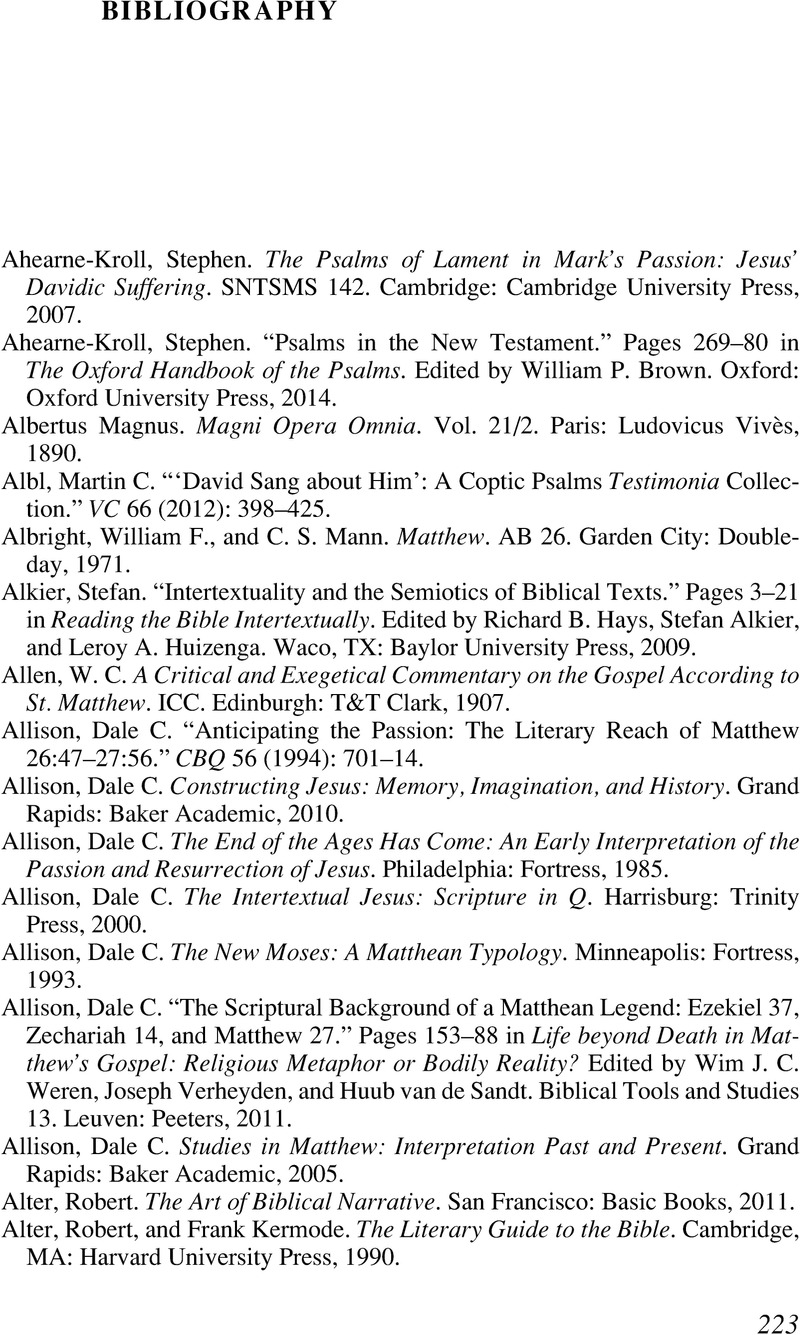Book contents
- The Suffering Son of David in Matthew’s Passion Narrative
- Society for New Testament Studies Monograph Series
- Society for New Testament Studies Monograph Series
- The Suffering Son of David in Matthew’s Passion Narrative
- Copyright page
- Dedication
- Contents
- Acknowledgments
- Abbreviations (not otherwise found in The SBL Handbook of Style, 2nd edition)
- 1 Introduction
- 2 Matthew’s Arrest Narrative, the Absalom Revolt, and Militant Messianism
- 3 The Psalms before “the Psalmist”
- 4 Setting Jesus’s Trial Narratives within the Davidic Psalms
- 5 Setting Jesus’s Crucifixion within the Davidic Psalms
- 6 Conclusion
- Bibliography
- Index of Ancient Sources
- Index of Modern Authors
- References
Bibliography
Published online by Cambridge University Press: 09 November 2023
- The Suffering Son of David in Matthew’s Passion Narrative
- Society for New Testament Studies Monograph Series
- Society for New Testament Studies Monograph Series
- The Suffering Son of David in Matthew’s Passion Narrative
- Copyright page
- Dedication
- Contents
- Acknowledgments
- Abbreviations (not otherwise found in The SBL Handbook of Style, 2nd edition)
- 1 Introduction
- 2 Matthew’s Arrest Narrative, the Absalom Revolt, and Militant Messianism
- 3 The Psalms before “the Psalmist”
- 4 Setting Jesus’s Trial Narratives within the Davidic Psalms
- 5 Setting Jesus’s Crucifixion within the Davidic Psalms
- 6 Conclusion
- Bibliography
- Index of Ancient Sources
- Index of Modern Authors
- References
Summary

- Type
- Chapter
- Information
- The Suffering Son of David in Matthew's Passion Narrative , pp. 223 - 246Publisher: Cambridge University PressPrint publication year: 2023



